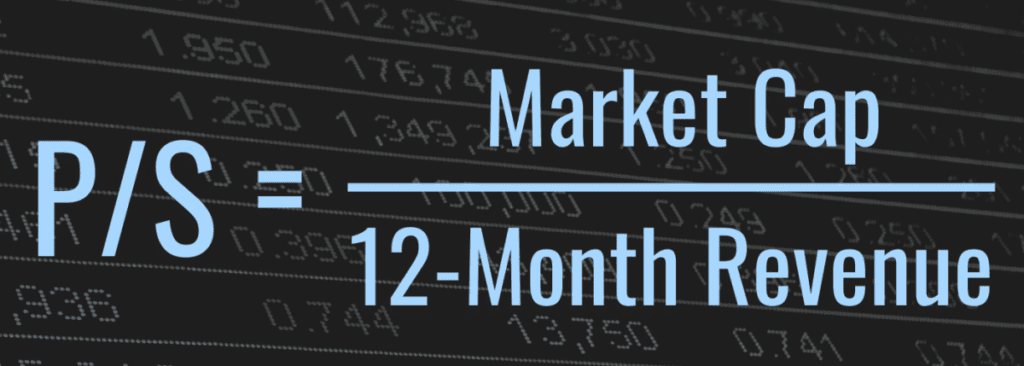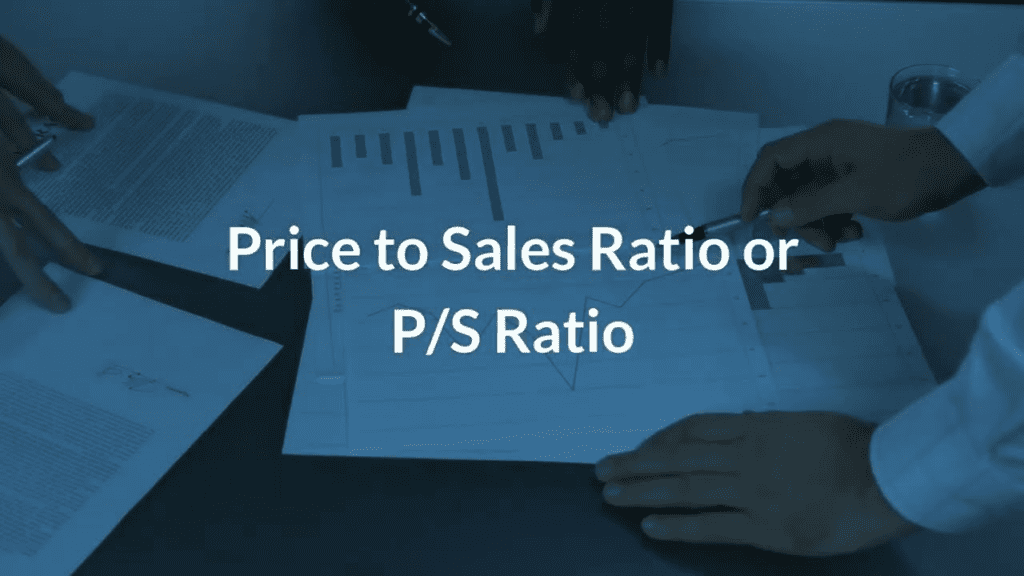
The Price-to-Sales (P/S) Ratio is a fundamental financial metric that holds a pivotal role in investment analysis, providing valuable insights into how the market values a company’s sales relative to its stock price. As a straightforward and accessible tool, the P/S Ratio is often employed by investors and analysts to assess a company’s valuation, especially in scenarios where traditional metrics like the Price-to-Earnings Ratio may be less applicable.
In this comprehensive guide, we delve into all aspects of the Price-to-Sales Ratio, exploring its calculation, significance, advantages, limitations, and the broader context of its application in financial analysis
What is the Price to Sales Ratio?

The Price-to-Sales (P/S) Ratio is a financial metric used to evaluate a company’s stock price in relation to its revenue. It is calculated by dividing the market capitalization of a company by its total revenue over a specific period.
Formula for the Price to Sales Ratio

The formula for the Price-to-Sales (P/S) Ratio is:
Price-to-Sales Ratio=Market CapitalizationTotal Revenue
Note:
- Market Capitalization: This is the total market value of a company’s outstanding shares of stock. It is calculated by multiplying the current market price per share by the total number of outstanding shares.
- Total Revenue: This represents the company’s total sales or revenue over a specific period, typically a fiscal year.
The resulting ratio provides a measure of how much investors are willing to pay for each dollar of a company’s sales. It’s important to note that the Price-to-Sales Ratio is just one of many financial metrics used to assess a company’s valuation, and its interpretation should consider industry norms and other relevant factors.
Benefits of Price to Sales Ratio

The Price-to-Sales (P/S) Ratio offers several benefits for investors and analysts when evaluating a company. Here are five advantages of using the P/S Ratio:
Useful in the Absence of Profits:
- The P/S Ratio is particularly valuable when a company has negative earnings or when earnings are not a reliable indicator of financial health. It provides a basis for valuation that is not dependent on profitability.
Simplicity and Accessibility:
- The P/S Ratio is straightforward to calculate and easy to understand. Investors can quickly assess how much the market values a company’s sales relative to its stock price, making it accessible for both novice and experienced investors.
Focus on Revenue Growth:
- For high-growth companies, especially in industries where rapid revenue growth is a priority, the P/S Ratio can be a useful metric. It reflects how investors are pricing the company’s potential for increased market share and revenue in the future.
Comparative Analysis:
- The P/S Ratio is useful for comparing companies within the same industry. It helps investors identify whether a company is over- or undervalued relative to its peers based on the market’s valuation of its sales.
Less Susceptible to Accounting Manipulation:
- Unlike some other valuation metrics that rely on earnings, the P/S Ratio is less susceptible to accounting manipulation. Revenue figures are generally considered more reliable and harder to manipulate compared to earnings.
While the P/S Ratio has these advantages, it’s important to use it in conjunction with other financial metrics for a comprehensive analysis. Additionally, industry norms and specific company circumstances should be considered for a more accurate interpretation of the ratio.
Limitations of the Price to Sales Ratio
While the Price-to-Sales (P/S) Ratio can provide valuable insights into a company’s valuation, it comes with limitations. Here are five key limitations to consider:
Profitability Ignored:
- The P/S Ratio does not take into account a company’s profitability. Two companies with the same P/S Ratio may have vastly different profit margins, making it important to supplement P/S analysis with other metrics like profit ratios.
Industry Variability:
- Different industries may have varying average P/S Ratios. Comparing the P/S Ratio of a company across industries without considering industry norms can lead to inaccurate assessments.
Doesn’t Consider Expenses:
- The P/S Ratio does not consider a company’s expenses or its ability to control costs. A company with a low P/S Ratio may still be inefficient in managing its costs, impacting overall financial health.
Dependence on Revenue Accuracy:
- The accuracy of the P/S Ratio is dependent on the accuracy of reported revenue figures. Companies might use different accounting methods, and revenue recognition practices can vary, affecting the reliability of the ratio.
No Consideration of Debt or Equity:
- The P/S Ratio does not incorporate a company’s capital structure, including its debt and equity. Therefore, two companies with the same P/S Ratio might have different risk profiles, as one may be heavily leveraged while the other is not.
It’s important to use the Price-to-Sales Ratio in conjunction with other financial metrics and ratios to obtain a comprehensive view of a company’s valuation and financial health. Additionally, understanding the specific context of the industry and the company’s individual circumstances is crucial when interpreting the P/S Ratio.